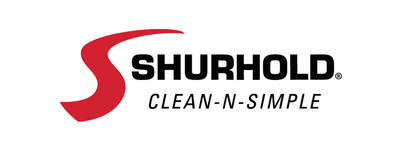Offshore Travel Safety Tips
Optional boating safety equipment is like icing on the safety cake. The Coast Guard requirements meet the essential ingredients for boating safety, but the following items increase your odds of staying safe on the water or a speedy rescue in the event the worst happens:
Float Plan
One of the most important safety steps is to let others know your plan for the trip. A float plan lets your family and friends know your whereabouts and, should a trip come to grief, the plan will give the searchers a valuable head start locating your boat. You can download or print an official USCG float plan here. Get in the habit of filing a float plan for any major offshore excursion.
VHF-FM Marine Radio
Either fixed or hand-held, marine VHF-FM radios give you edge over calling for help on a cell phone because you can speak directly with the Coast Guard on Channel 16, which never has spotty reception, and other boaters who may be nearby can hear your distress call.
EPIRB or PLB
An Emergency Position Indicating Radio Beacon (EPIRB) or a Personal Locator Beacon (PLB) sends a distress signal with your exact coordinates for increased likelihood of rescue. An EPIRB can be self-activating when immersed in water, or activated by hand and worn on a person or attached to a boat. A PLB is a simplified and often less expensive alternative to an EPIRB.
Nautical Charts
Nautical charts provide essential information about the area you are boating in. They not only help you navigate safely, but they show you the depth of water, underwater obstructions, and aids to navigation such as buoys and lights, and danger areas.
GPS / Radar
A GPS is a useful item to tell you where in the world you are, and if you get lost while boating, say in the fog, a GPS can give you the coordinates to help you find your way again. Your coordinates can also be passed to the Coast Guard in an emergency making it easier to locate. A RADAR shows objects that may obstruct your path and vessels that may propose a collision risk. Finally, a Chart Plotter is nautical chart at your fingertips that provides real-time chart information as you drive. They often include a GPS and RADAR, making them a perfect boating safety accessory.
Throwable Life Ring
Simple yet effective a throwable life ring becomes a lifeline in the event of a man overboard. If equipped with a strobe light, it can also provide an effective search and rescue tool if the person can not be recovered immediately, such as in the case of a person going over at night and who may be injured.
Distress Signal Devices (Flares)
Distress signal flares are used by mariners to indicate an emergency. They work by alerting nearby boaters, people on land or search and rescue personnel through the use of bright lights in white or red and orange, which are the international distress colors. This guide to distress signal devices, otherwise known as flares, will show you the types of flares and their uses aboard your boat.
Day Distress Signals
There are two types day distress signals – an orange distress flag or orange smoke handheld flares. The orange flag is an international distress symbol that can be seen for miles and is best used by placing it high on your vessel so that, if possible, it can be seen by air and by sea. Hand-held orange smoke flares are also visually striking by emitting a large cloud of orange smoke. When using these flares, keep in mind that they only last about a minute, so deploy them when you have the greatest opportunity of being spotted by air or vessel traffic.
Day/Night Combination Signals
The most commonly known visual distress signals are red flares. Red flares can be found in hand-held devices and in arial devices that shoot a flare into the sky. Most are approved for day and night use by the U.S. Coast Guard.
The hand-held devices work by emitting a bright red light, roughly about 700 candlepower for nearly 3 minutes. They are useful to direct rescuers to your location and work best when rescue is near.
Arial red flares are sent up into the sky using a launching device and can be seen from a great distance. They burn for about 5 – 6 seconds, alerting others boats and land goers to a distress either in the day or at night.
Another type of arial flare is the parachute flare, available in white or red. Parachute flares on average can be seen up to 25 miles away, go up to 375 feet and burn for almost 7 seconds. They are the most powerful arial launched flare available. They are approved for either day or night use.
Distress Kits
Most distress signal manufacturers offer kits with a combination of electric flashing white lights, whistles, a distress flag, day smoke signals and both hand-held and arial day/night combination flares. A kit can give you everything you need to meet federal requirements while taking the guesswork out of purchasing flares.
The Coast Guard requires all vessels over 16 ft. to carry a varying combination of day and night visual signal devices depending upon the size of your boat for good reason – when used properly, they can save lives. Be sure to replace yours by the expiration date and store them in a dry compartment so they will be ready if you ever need them.
Until next time, keep it Clean-N-Simple
Optional boating safety equipment is like icing on the safety cake. The Coast Guard requirements meet the essential ingredients for boating safety, but the following items increase your odds of staying safe on the water or a speedy rescue in the event the worst happens:
Float Plan
One of the most important safety ...
Read More...
